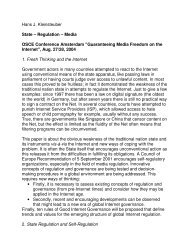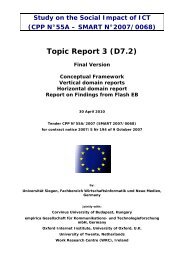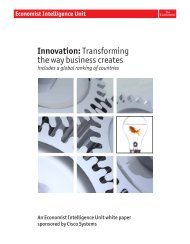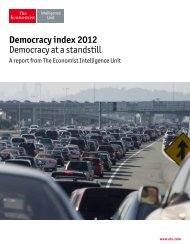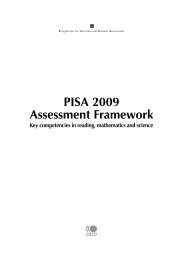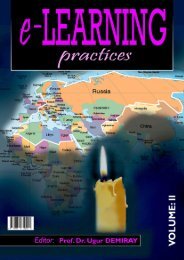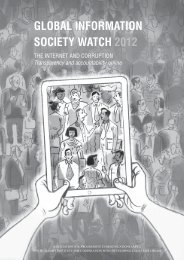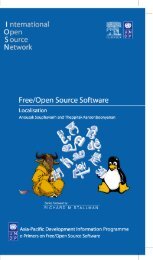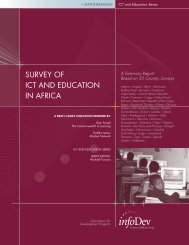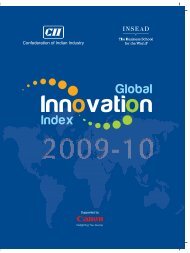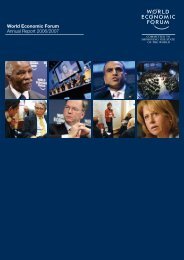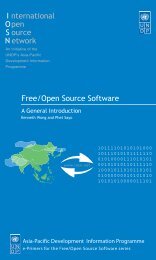Legal Aspects of the Information Society. - Free Technology Academy
Legal Aspects of the Information Society. - Free Technology Academy
Legal Aspects of the Information Society. - Free Technology Academy
You also want an ePaper? Increase the reach of your titles
YUMPU automatically turns print PDFs into web optimized ePapers that Google loves.
GNUFDL • 13 Intellectual property: authors' rights and copyright<br />
It is not easy to define originality. Indeed, it constitutes <strong>the</strong> most disputed<br />
matter over recent years in <strong>the</strong> continental tradition. The most orthodox tradition<br />
<strong>of</strong> <strong>the</strong> system <strong>of</strong> Authors' rights requires a "trace <strong>of</strong> persona or personality"<br />
<strong>of</strong> <strong>the</strong> author, although <strong>the</strong>re is no unanimity in national legislations in<br />
terms <strong>of</strong> <strong>the</strong> degree <strong>of</strong> originality that may be required.<br />
The test <strong>of</strong> <strong>the</strong> originality <strong>of</strong> a work tends to have two aspects: <strong>the</strong> first is that<br />
<strong>the</strong> work must be original <strong>of</strong> <strong>the</strong> author, in <strong>the</strong> sense that it truly should have<br />
been created independently <strong>the</strong>reby, not copied from o<strong>the</strong>r work; <strong>the</strong> second<br />
is that <strong>the</strong> work must contain enough creativity to not be susceptible <strong>of</strong> being<br />
considered something mechanical.<br />
Supplementary content<br />
In <strong>the</strong> United States, for instance,<br />
a work is required to<br />
be incorporated in a tangible<br />
means <strong>of</strong> expression, from<br />
which it may be perceived, reproduced<br />
or communicated<br />
by any means, whe<strong>the</strong>r directly<br />
or with <strong>the</strong> aid <strong>of</strong> a machine<br />
or device.<br />
In s<strong>of</strong>tware, it is difficult to define when originality exists, as it is a utility creation, where<br />
sometimes <strong>the</strong>re is little room to manoeuvre. A low-level criterion has been chosen and,<br />
in general, it is deemed sufficient for <strong>the</strong> s<strong>of</strong>tware to be <strong>the</strong> result <strong>of</strong> a personal effort,<br />
i.e., that it not be a copy, for it to be considered original.<br />
The copyright system generally requires a lower level <strong>of</strong> originality and solely<br />
requires that <strong>the</strong> creation should be <strong>the</strong> result <strong>of</strong> a personal effort, i.e., that<br />
it should not be copy. To <strong>the</strong> extent that <strong>the</strong> origin <strong>of</strong> <strong>the</strong> s<strong>of</strong>tware may be<br />
attributed to <strong>the</strong> author, i.e., that it has been created independently and has<br />
not been copied from o<strong>the</strong>r works, it would be considered original.<br />
2.3. Author's rights and s<strong>of</strong>tware<br />
Initially, computer programs were not marketed separately, as <strong>the</strong>y were sold<br />
with <strong>the</strong> hardware and <strong>the</strong>ir protection was confused with that <strong>of</strong> <strong>the</strong> overall<br />
product sold, <strong>the</strong> computer (a phenomenon known as bundling, which has<br />
once again acquired importance with mobile devices and o<strong>the</strong>r such items).<br />
Fur<strong>the</strong>rmore, <strong>the</strong>re were no technologies that could be used to copy <strong>the</strong>m or<br />
use <strong>the</strong>m outside <strong>of</strong> <strong>the</strong> computer in any general way, so <strong>the</strong>re was no great<br />
concern for <strong>the</strong>ir protection.<br />
The need for protection began to be seen in <strong>the</strong> late seventies, when, by reason<br />
<strong>of</strong> <strong>the</strong> United States antitrust legislation, IBM was forced to separate its<br />
hardware and s<strong>of</strong>tware businesses. Consequently, computer programs began<br />
to be marketed in separate mediums and <strong>the</strong> autonomous protection <strong>of</strong> this<br />
technology, extremely vulnerable to copy, was warranted to protect <strong>the</strong> investments<br />
made in its creation and also as a means <strong>of</strong> encouraging <strong>the</strong> dissemination<br />
<strong>of</strong> computer programs to larger numbers <strong>of</strong> people.



